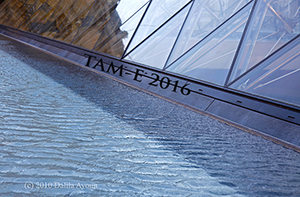The Nakh-Daghestanian languages are spoken in the centre of a large area where indirect evidentiality as a meaning of the perfect occurs among structurally and genetically diverse languages, see Aikhenvald (2004). There is little material available on the grammatical semantics of the perfect in most of these languages and systematic comparative studies are even more rare, although many reference grammars mention forms used to designate indirect information. It remains unclear whether evidentiality marking in these languages has emerged due to language contact and subsequently been dispersed throughout the family, or has developed language internally.
This study compares the usage of perfects in Avar and Andi, two closely related Nakh-Daghestanian languages, using a questionnaire aimed at eliciting different usages of the perfect (see Lindstedt (2000)). Results show that despite genetic closeness and contact there is a significant difference in the conventionalization of evidentiality. The Andic system seems closer to those found in the Tsezic languages, in which indirect evidentiality is grammaticalized as a meaning of the perfect and a preterite form has been reanalyzed as a marker of direct evidentiality (Khalilova 2011). In Avar the aorist does not express direct evidentiality and the indirect meaning does not occur consistently in evidential contexts. As also noted by Mallaeva (2007, 218) the aorist can often substitute the perfect, resulting in a less emotional and more factual account of the event. Thus it does not seem plausible that Avar induced evidential marking in Andi.
Aikhenvald, A. 2004. Evidentiality. Oxford: OxfordUniversity Press.
Khalilova, Z. 2011. 'Evidentiality in Tsezic languages'. In Linguistic Discovery 9, 30-48.
Lindstedt, J. 2000. ‘The perfect – aspectual, temporal and evidential.' In Dahl (ed) Tense and aspect in the languages of Europe. Berlin: Mouton de Gruyter, 365-384.
Mallaeva. Z. 2007. Glagol avarskogo jazyka. Makhachkala: Institut imeni G Cadasy.

 PDF version
PDF version
